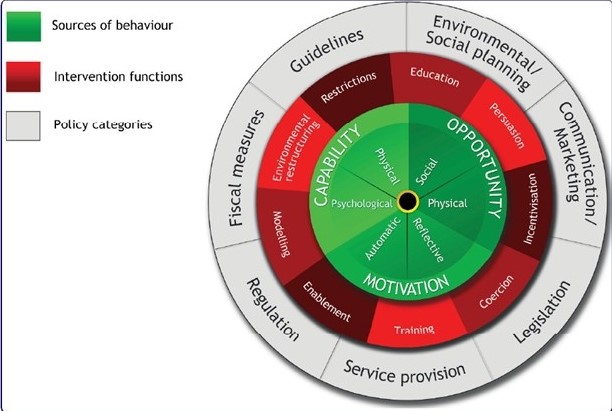This has been a hugely enjoyable project to be involved in, not least as it has been an opportunity to meet and hear perspectives from lots of interesting people, and has been a huge learning process. And of course I’ve been able to visit the Heaths and call it work for a few months!
Now that this project has come to an end (although it won’t be the end of this strand of work for me personally), here are some of the insights and highlights – including the main results and conclusions of the economic health and wellbeing valuation, the workshop engaging people from a range of relevant organisations, and other insights. The full report will shortly be available via the East Devon Pebblebed Heaths Conservation Trust (EDPHCT) website. A huge thank you to staff at Clinton Devon Estates / EDPHCT, and to Becca Lovell and other staff at the European Centre for Environment and Human Health (ECEHH) for their assistance on this project.
So how many people are visiting the Pebblebed Heaths and what events are there?
A variety of events are carried out each year on the Heaths for the public including family events, guided walks, schools groups, cycling races, horseriding events, practical conservation work parties, etc (see below). These are organised by a range of organisations including the the East Devon Pebblebed Heaths Conservation Trust (EDPHCT), the RSPB, Devon Wildlife Trust and East Devon District Council, as well as external events run by a range of other organisations (e.g. the Commando Challenge and the Knobbler bike challenge) which overall in 2017 raised approximately £80,750 for local charities. Below is a summary of just the organised ones that we know about (and that registered with EDPHCT) – there are many more that we haven’t been able to capture figures on.
Summary of activities and events on the Pebblebed Heaths in 2017
| Total no. of events | 814 |
| Total no. of participants | 3339 |
| Total no. of participant hours per year | 17931.5 |
| Event / activity | No. of events / activities | No. of participants |
| Guided walks | 23 | 435 |
| Practical conservation work | 109 | 145 |
| Ecological survey | 272 | 63 |
| Livestock checks | 380 | 16 |
| Horse riding | 4 | 80 |
| Cycling | 5 | 235 |
| Orienteering | 2 | 75 |
| Educational activity (schools / FE colleges) | 7 | 394 |
| Other events (family etc) | 12 | 1896 |
| Total | 814 | 3339 |
Workshop on developing partnerships to increase the health and wellbeing value people get from the Heaths
As part of the project we held a workshop at Budleigh Salterton Health and Wellbeing Hub at the end of February – this workshop was well-attended and brought together 28 participants from 17 different organisations working in the environmental, public health and disability fields in the region. There were a number of interesting insights from the presentations and discussions, including suggestions on how to develop more joined-up and collaborative ways of working with the plethora of organisations doing valuable work in this area, and some simple ways of improving access for mobility scooters / trampers.
Results and conclusions from the economic valuation on the health and wellbeing value of the Heaths
The Pebblebed Heaths are associated with an important health and wellbeing value of at least £0.4m annually relating to physical activity linked to their recreational use. This figure relates only to the minority of visitors who exercise on the Heaths on a regular basis. The amount all estimated visitors are willing to pay to visit the site (travel cost) equates to around £1.9m annually. The results from the different economic valuation methods are provided below:
| Valuation method | Total annual economic value | No. of visits / visitors estimate based on | Age range (if applicable) | Notes & distinguishing features of tool |
| Travel cost method | £1.9m | 422,495 visits | N/A | Based on willingness to pay to get to site |
| Outdoor Recreational Valuation (ORVal) | £1.7m | 571,919 visits | N/A | Based on MENE data & travel cost and complex algorithms |
| WHO Health Economic Assessment Tool (HEAT) | £0.4m | 3097 (regular visitors – 3×30 mins per week; brisk pace) | 20-74 yrs | Assesses value of health impact of exercising; |
| MOVES tool (University of East Anglia / Sport England) | £0.6m | 3097 (regular visitors – 3×30 mins per week; brisk pace) | 16-61+ | Similar to HEAT; uses (QALYs); differentiates between age groups |
These estimates do not include the important value of the mental health benefits (or qualitative values) associated with visiting the Heaths, as tools for calculating these are still being developed. The MOVES estimates also show that the health and wellbeing benefits as measured by economic value are much greater for older people.
The return on investment for the health economic impact only (measured by HEAT and MOVES) is in excess of 28% (between 28 and 59%); and for the overall economic impact (measured by travel cost and ORVal) it is at least 392% (between 392% and 437%), although this does not take capital or infrastructure costs into account. This shows that investing in public access green space yields extensive health and wellbeing benefits to those living near and visiting such locations that are much higher than the costs.
Policy relevance and influence
There is evidence from the literature that use of natural environments encourages higher levels of physical activity, and that there are additional beneficial effects to doing physical activity outdoors compared to indoor activity. These economic valuations are robust across different valuation methods and therefore useful for policy makers when planning future funding mechanisms. These types of valuation could also be extended to other sites in a cost-effective way. However, it is important that economic valuations are used combined with a better understanding of the qualitative, mental health and non-use values of such sites.
Less tangible benefits of natural environments
Although detailed information on the Heaths about qualitative benefits of visiting the Heaths is not currently available, there are interesting insights from Natural England’s MENE survey across the UK about how visiting natural environments has made people feel and the positive but less tangible benefits they get from doing so:
| Statement | Agree strongly (%) | Agree (%) |
| …I enjoyed it
|
48 | 49 |
| …It made me feel calm and relaxed
|
31 | 57 |
| …It made me feel refreshed and revitalised | 31 | 55 |
| …I took time to appreciate my surroundings | 27 | 55 |
| …I learned something new about the natural world | 9 | 22 |
| …I felt close to nature
|
24 | 51 |
Source: Monitor of Engagement with the Natural Environment. Natural England 2017:11.
Behaviour change and a synthesis of potential interventions and policy measures
I also wanted to share here an interesting synthesis of several approaches to behaviour change that could be applied to implementation of nature-based interventions – how we might increase people’s engagement with natural environments.
It shows that behaviour change depends on people’s capability, opportunity and motivation, and demonstrates the range of approaches (including incentives, educational interventions, policy measures, modelling, etc.) available that could potentially be used to increase interventions and multiply the benefits that can be gained from engagement with natural environments.

The Behaviour Change Wheel by Michie, van Straalen and West (2011:1).
More info
There are a number of useful evidence reviews that this project has drawn heavily on, including by Natural England on the links between natural environments and physical activity, and between natural environments and mental health, and an upcoming ‘What Works’ briefing commissioned by DEFRA on natural environment based health interventions (not yet available).
In addition, a Beyond Greenspace blog reports on research findings from the European Centre for Environment and Human Health about why people don’t visit natural environments, and gives recommendations on how this could be addressed through policies and interventions:
Key reasons people gave included ‘too busy at home’, and ‘too busy at work’ to visit natural environments. The authors suggest that the research ‘might help decision-makers focus and tailor their interventions within areas and amongst populations where they could have the largest impact’. ‘One of the strongest predictors of feeling ‘too busy at home’ to engage with these natural environments was having children in the household. Thus… interventions… might instead aim to work with parents of young children to identify appropriate forms of support that would help them to access local parks and other greenspaces in ways that could potentially benefit both parents and children alike.’. Another key factor in low levels of use was reporting being ‘too busy at work’ to visit natural environments, the authors suggest that ‘there is perhaps a need to facilitate the integration of more time-efficient nature experiences into the working day, be it through greening work commutes and offices, promoting a better outdoor break culture within office environments, or offering more virtual forms of nature ‘access’ within offices themselves, promoting at least fleeting moments to tap into the more restorative properties of nature within the workplace.











One thought on “Insights on the health and wellbeing value of the Pebblebed Heaths”
Comments are closed.